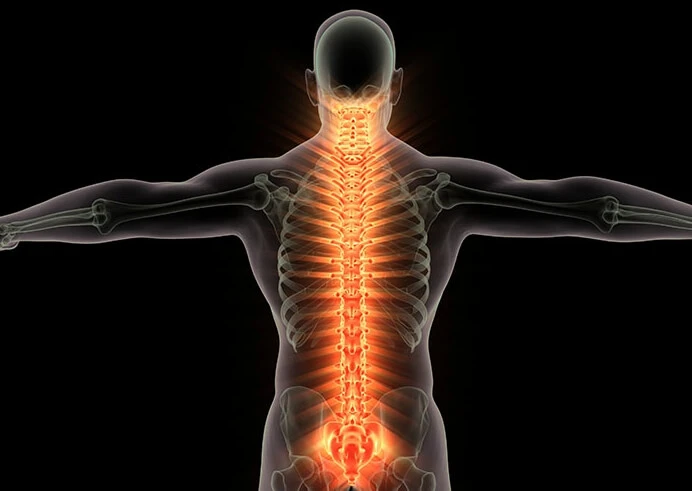Spinal problems can lead to pain, restricted movement, and severe damage to the nervous system, significantly impacting patients’ quality of life and health. Accurate spinal diagnosis is therefore crucial.
Historically, spinal diagnosis often relied on radiation-based imaging techniques such as X-rays, CT scans, and MRI scans. While these methods offer detailed anatomical information, they come with drawbacks, including radiation exposure and high costs. As medical technology advances, radiation-free spinal diagnosis methods are gaining attention as promising alternatives.
Principles and Techniques of Radiation-Free Spinal Diagnosis
Radiation-free spinal diagnosis employs non-invasive technologies, differing from traditional radiation-based methods.
Ultrasound is a common method used in radiation-free spinal diagnosis. It works by sending ultrasound waves through the skin to the spine and surrounding tissues, which then reflect back to the diagnostic device. The device captures these reflected waves and converts them into images of the spine and surrounding tissues. Advantages of ultrasound include high safety, low cost, and real-time monitoring, making it suitable for specific cases like pregnant women and children.
Magnetic Resonance Imaging (MRI) is another widely used radiation-free technique. MRI uses magnetic fields and harmless radio waves to generate detailed spinal images without radioactive substances. During an MRI scan, a patient is placed in a strong magnetic field, causing hydrogen atoms in the body to resonate and emit signals. These signals are processed to produce high-resolution images of spinal structures and abnormalities. MRI is known for its high image resolution and effective display of soft tissues and blood vessels, making it ideal for diagnosing soft tissue injuries and diseases.
Application Scope of Radiation-Free Spinal Diagnosis
Radiation-free spinal diagnosis is versatile and suitable for diagnosing and monitoring various spinal issues.
- Degenerative Spinal Diseases: Techniques like ultrasound and MRI are used to observe changes in spinal structures, such as disc degeneration and joint inflammation, aiding in treatment planning.
- Spinal Injuries: These methods help quickly and accurately assess spinal fractures and vertebral damage, guiding treatment and rehabilitation.
- Spinal Tumors: Radiation-free methods are effective in detecting tumors in the spine, evaluating their nature, size, and location, and informing treatment strategies.
- Spinal Deformities and Nerve Root Compression: Detailed spinal observations help in identifying deformities and nerve compression, facilitating personalized treatment plans.
Development and Trends of Radiation-Free Spinal Diagnosis
The development of radiation-free spinal diagnosis is driven by advances in imaging and computer technology. Modern equipment offers higher resolution, faster speeds, and enhanced functionality, improving the accuracy of spinal imaging.
The application of radiation-free spinal diagnosis is expanding beyond traditional uses. It is increasingly employed in navigation surgery, spinal posture assessment, and kinematic analysis, offering clinicians more diagnostic and treatment options. As awareness of spinal health grows, so does the adoption of radiation-free methods. More patients and doctors are recognizing the benefits of these technologies.
Future developments may include integration with artificial intelligence and big data, potentially revolutionizing spinal health assessment and treatment.
Forethought’s Spinal Diagnosis Products
Forethought offers advanced spinal diagnosis products, including diagnostic equipment and software solutions. Their equipment utilizes state-of-the-art radiation-free technologies, such as ultrasound and MRI, to provide high-resolution spinal images. Additionally, Forethought has developed intelligent software solutions for image processing and data analysis, enhancing diagnostic efficiency and accuracy.
The company collaborates with medical institutions and professionals to optimize product performance and ensure industry compliance. Forethought’s products are widely used and recognized both domestically and internationally, demonstrating their advanced technology and reliability.
Forethought’s commitment to innovation positions it as a leader in the field of spinal diagnosis, contributing significantly to advancements in spinal health.
参考文献
- “Ultrasound in Spinal Diagnosis: Principles and Applications” – ソースを見る
- “The Role of MRI in Spinal Imaging” – ソースを見る
- “Advantages and Limitations of Ultrasound Imaging in Spinal Disorders” – ソースを見る
- “Magnetic Resonance Imaging of the Spine: A Review” – ソースを見る
- “Non-Radiation Techniques in Spinal Diagnosis” – ソースを見る
- “Applications of MRI in Spinal Disorders” – ソースを見る
- “Current Trends in Radiation-Free Spinal Diagnosis” – ソースを見る
- “Ultrasound and MRI in Spinal Diagnostics: A Comparative Study” – ソースを見る
- “Innovations in Spinal Imaging Technologies” – ソースを見る
- “Advancements in Radiation-Free Spinal Health Assessment” – ソースを見る

